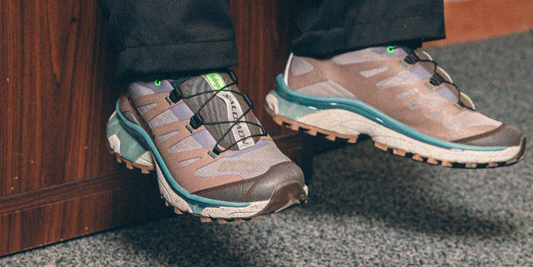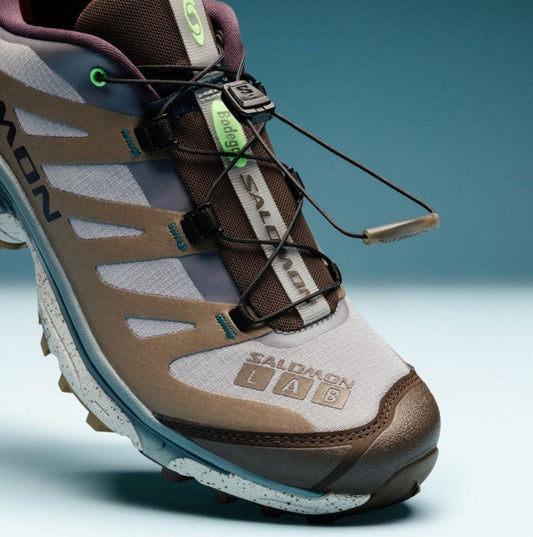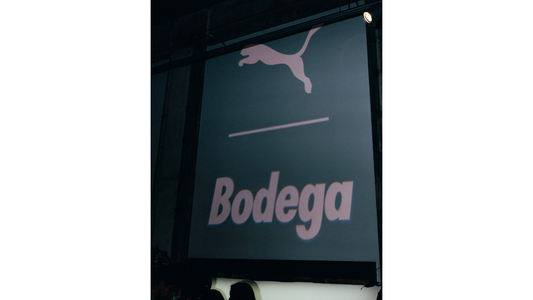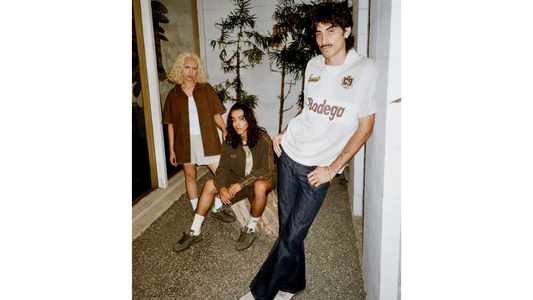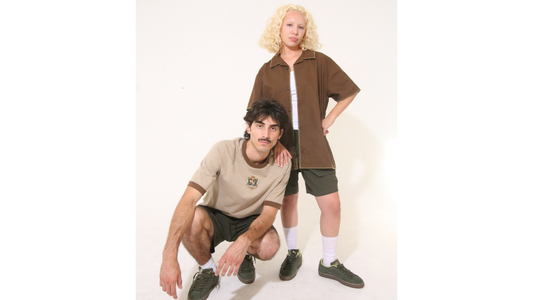Sneaker culture is bigger than ever, and as encompasses more and more of the culture, it seems like the variety and availability of shoes is near limitless. If we learned one thing from our work on the Asics Gel-Classic, it's that for all the choice out there, the sheer scope of sneaker history means that there are an even larger number of archival shoes that have never been touched. Before "lifestyle" became a distinct market, what we would now consider classic sneakers were just another athletic shoe, meant to adhere to specific performance needs. When technology moved on, they would be discarded. This got us thinking about some of our favorite historical shoes that have never been let out of their respective archives.

1) Nike – Decade: Now, and probably forever, the permanent number one on any list of shoes that won’t see the light of day again. When one Marshall Applewhite made a bulk purchase of these comparatively nondescript 1993 runners from a San Diego sporting goods supplier, no one could have predicted that they were on their way to becoming the most notorious Nikes of all time. The recipients of these ill-fated Decades were the members of the Haven’s Gate cult. After the cult members committed mass suicide over the course of March 24-26, 1997, their black and white Nikes were, in what must rank as the worst example of product placement in recorded history, prominently jutted out from the purple sheets covering the corpses. When a Nike SB shoe attempted to slip a Heaven’s Gate reference through, with a black, white, and purple colorway, Nike killed the shoe. It’s safe to say that there will never be a new pair of Nike Decades again.

2) Puma – Full House: When iconic pro wrestling announcer Jim “J.R.” Ross wanted to convey that a match was a particularly inelegant affair, the phrase “bowling shoe ugly” was his go-to descriptor. The garish rental shoes that stock American bowling alleys from coast to coast have become cultural shorthand for dreadfully unattractive.
The amount of people who used that phrase to refer to the Puma Full House, we imagine, was rather limited. The Full House is suggestive of a time when the traditional footwear powers were about, before anything else, athletics, and every sport, no matter how specialized, had dedicated footwear. There’s a greater convergence of sneakers and upscale fashion than ever before, and the combination of sleekness and staidness is the kind of thing subcultures with a sharp eye for fashion have been building on forever, but the demand for ultra modern might keep this in the history books for good.

3) Asics Gel-Crusher: Another hidden treasure from our collaborative partners Asics. Running is unquestionably the company’s bread and butter, but if there is another sport that holds a special place in Asics history, it’s volleyball. The 1964 Olympic gold medal winning women’s Japanese team, better known as the “Toyo no Majo” dropped one set in the entire tournament, while wearing Asics Rotation 6 shoes.
The Rotation 6 has a story of national Olympic heroes and timeless retro aesthetic attached to it; the Gel Crusher, on the other hand is a gloriously functional piece of 90s design. The heavily cushioned, chunky silhouette and mostly white (the one tiger striped side panel suggests a more familiar Asics trying to break through the design) colorway are a harbinger of the sharp division in design that would occur in the 90s between functional and lifestyle shoes. The Gel Crusher, by virtue of being caught between two eras, is a unique design that we probably won’t see the likes of again.

4) Adidas Desiree: In the imagination, the Adidas archive is reminiscent of the warehouse at the end of ‘Raiders of the Lost Ark.’ In other words, it’s almost impossible to physically contain such a boundless amount of history without things being lost in the shuffle, sometimes forever.
When Adidas put their archive online, a treasure trove of items that previously survived as totemic chants, passed down among generations of Adidas collecting football casuals were exposed to the modern world. But, no one ever seems to mention the Desiree, a late 80s, women’s lifestyle shoe.
The silhouette, nylon/velour/EVA construction are all classic, 1980s Adidas, as are the traditionally feminine colors but there is an intangible factor that makes the Desiree more than the sum of its parts. The Desiree sported features like gradient colorways, multi-colored effects on the three stripes and heel counters, and a unique ‘fashion’ script logo on the tongue. Features like this aren’t something you see every day, then or now, so to make such matter of fact use of them on a leisure shoe that looks very much like the product of its time is the kind of thing that stops you dead in your tracks.

5) Vans Mary Janes: You’re probably thinking that there has to be some kind of mistake, and that Vans probably offers several dozen variations of the Mary Jane. It’s true that Vans offers styles inspired by the iconic girl’s silhouette, but the proper, buckle strap-over version still lies dormant in its 1990s, world map graphic, brown cardboard Vans box.
The Mary Jane has been a traditional part of childhood since the early 20th century, but the shoe rose to pop culture prominence in the 90s when the kinderwhore look, originally a punk subversion of traditional, feminine children’s fashion featuring torn and ripped clothing, prominent make-up, and good, old Mary Janes, was vaulted into mainstream consciousness by Courtney Love. Elements of the look have remained subcultural institutions ever since. It’s easy to see why Vans, whose subculture connections are part of the brand’s legacy, put out this excellent version of the Mary Jane. It is, however, baffling, especially with the current thirst for all things 90s, that Vans haven’t brought this back yet.
Words: Dan Alvarez


